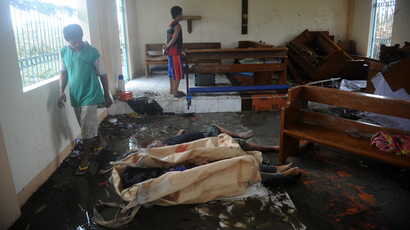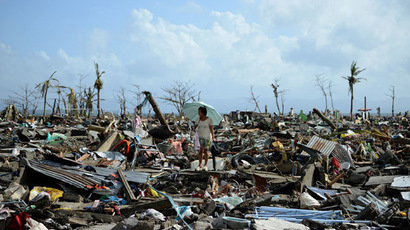Deadly clashes rage in typhoon-ravaged Philippines as survivors fight for food
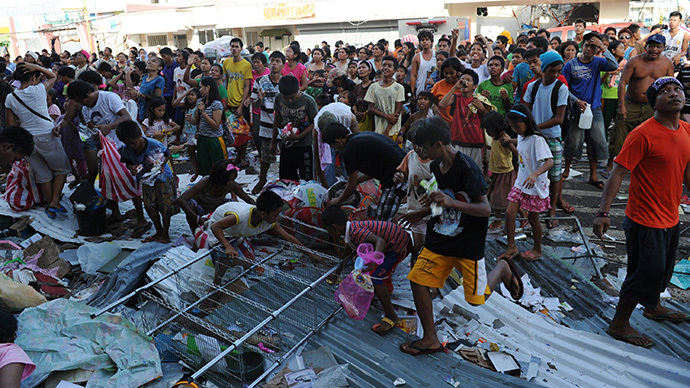
Driven to despair, survivors of Typhoon Haiyan in the Philippines turned to looting in search for food, water and medicine amid reports of warehouses and shops attacked in the aftermath of one of the strongest storms ever recorded.
As essential supplies dwindled, tensions rose. Since the storm
hit the islands five days ago, residents have broken into homes,
shops and warehouses, where they have drained shelves of food,
water and other vital goods.
In the latest incident, Philippines security forces exchanged
fire with armed looters in the village of Abucay, part of the
worst-hit Tacloban in Leyte province, local ANC television
reported on Wednesday.
On Tuesday, eight people were crushed to death after thousands of
typhoon survivors stormed a government rice warehouse. Police and
soldiers were helpless when the looting took place, National Food
Authority spokesman said. The looters in Alangalang municipality
carted away over 100,000 sacks of rice.
Warehouses owned by food and drinks company Universal Robina Corp
and drug company United Laboratories in the storm-hit town of
Palo, along with a rice mill in Jaro, were also ransacked.
"We have restored order," director of the Philippine
National Police special action force, Carmelo Espina Valmoria,
told AP. "There has been looting for the last three days,
[but] the situation has stabilized."
"The looting is not criminality. It is self-preservation,"
Tacloban city administrator John Lim told Reuters. Tacloban, the
principal city in Leyte province which has also become the main
relief hub, currently lies in ruins, with communications and
transport cut off in many areas.
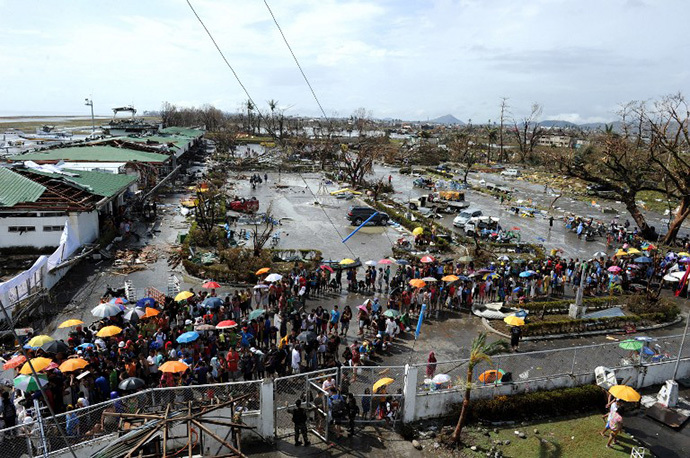
According to Lim, 90 percent of the coastal city of 220,000
people had been destroyed, with only 20 percent of residents
receiving aid. Houses there are looted there because warehouses
are empty, the official says.
Some survivors carried signs reading "Help us". Others dug
up water pipes in a desperate bid for water.
"We sourced our water from an underground pipe that we have
smashed. We don't know if it's safe. We need to boil it. But at
least we have something," Christopher Dorano, told Reuters.
One of the survivors, Rachel Garduce, said the minimal aid - 3 kg
of rice and 1 liter of water per household a day - was not enough
in her ravaged Tacloban neighborhood.
Islands of Leyte and Samar appear to concentrate most of the
death and destruction from Typhoon Haiyan which swept through six
central Philippine islands. In Leyte province alone, thousands
are feared dead or missing.
Over 11 million people may have been affected and some 673,000
displaced by the typhoon, according to the UN. The preliminary
number of those missing, according to the Red Cross, is 22,000.
Philippines President Benigno Aquino said however, that the death
toll could be lower than initially thought. It was allegedly
closer to 2,000 or 2,500 than the widely-reported figure of
10,000 killed.
According to the National Disaster Risk Reduction and Management
Council, official confirmed deaths stood at 2,275 on Wednesday,
with another 3,665 injured.
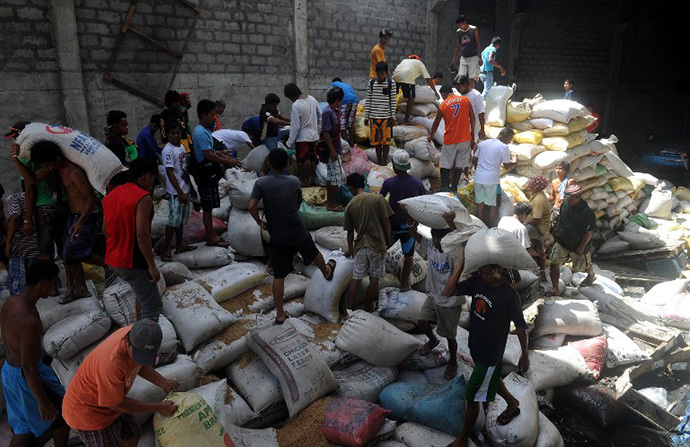
Meanwhile, relief operations are only starting to gain momentum,
with two more airports in the region reopening, allowing for more
aid flights.
While thousands of survivors have been looking for a flight out,
makeshift clinics have been set up at the damaged airport in
Tacloban. Teams from Belgium, Japan, Israel and Norway had
arrived in the Philippines to set up field hospitals. One doctor,
Victoriano Sambale, told AP supplies of antibiotics and
anesthetics arrived Tuesday for the first time. Until then,
patients had to endure the pain, he said.
The US and UK have dispatched warships to the typhoon-ravaged
islands to help facilitate relief efforts. Japan is also set to
deploy troops to the country to aid affected areas. The ships are
expected to arrive in the next two to three days.
"There is a huge amount that we need to do. We have not been
able to get into the remote communities," UN humanitarian
chief Valerie Amos said on Tuesday in Manila, launching an appeal
for $301 million to help those affected by the deadly storm.
Rescuers have managed to reach some previously cut off regions,
such as Guiuan, a city of 40,000 people that was spared the storm
surge. Local officials say 85 people died in Guiuan, with 24
missing.
The overall financial cost of the destruction is hard to assess
so far. One report from the German-based CEDIM Forensic Disaster
Analysis has put the total at $8 billion to $19 billion.













